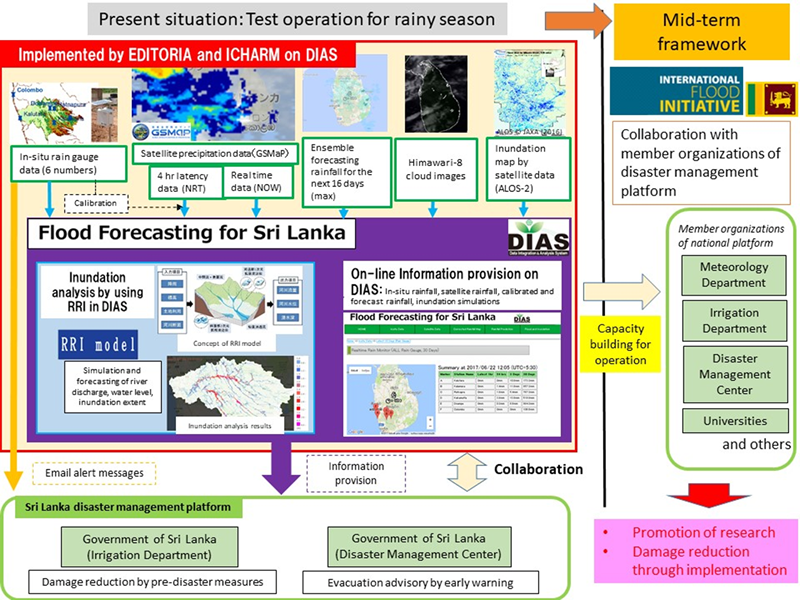Intensive rainfall started on May 24, 2017, and continued intermittently, resulting in a record daily maximum rainfall of over 550 mm in some parts of Sri Lanka. This heavy rainfall caused severe floods and landslides nationwide, especially in the Kalu River basin located in the south-western part of the country. More than 300 people were reported to be dead and missing, and more than 18,000 houses were reported to be damaged (as of June 3, 2017, by the Government of Sri Lanka).
In response to this flood disaster, upon the request of the government of the Democratic Socialist Republic of Sri Lanka, the government of Japan dispatched the Japan Disaster Relief (JDR) Expert Team to Sri Lanka to assist flood recovery efforts from June 2 to June 11, 2017. The Public Works Research Institute (PWRI) assisted by sending senior researcher Mohamed Rasmy Abdul Wahid as its expert.
Since more flood disasters are anticipated in Sri Lanka, EDITORIA*1 and ICHARM cooperate to provide the following information for effective flood management by coupling outputs of meteorological and hydrological models developed by ICHARM with DIAS*2 developed by EDITORIA.
Through this support, Sri Lanka will be provided with various types of flood-related information based on the latest research findings achieved by EDITORIA and ICHARM. This information will enable the government organizations of Sri Lanka to disseminate effective flood forecasts and early evacuation alerts, which will lead to human damage reduction and efficient emergency response.
(*1) EDITORIA, “Earth Observation Data Integration and Fusion Research Initiative”, was established in April 2006 as a research institute for studying an integrated use of earth observation data by mutually collaborating with organizations in different fields, such as earth observation, information science and technology, and public policy concerning disasters and agriculture, in the University of Tokyo. With support from the Ministry of Education, Culture, Sports, Science and Technology (MEXT), EDITORIA has developed the Data Integration and Analysis System (DIAS), which is capable of processing various types of massive earth observation data from heterogeneous information sources. EDITORIA has been creating information which contributes to deepening understanding of the global environment, to increasing prediction capabilities, and to assisting well-informed policy making on risk management, resources management, and other critical issues.
(*2) DIAS, “Data Integration and Analysis System”, started in 2006 as a MEXT-led project to develop and utilize data infrastructure, can collect and store a massive volume of diverse data. DIAS can combine different types of data including socio-economic data, and convert data into information useful for risk management with respect to global-scale environmental issues, natural disasters, and other threats, and provide this information in real time for users in Japan and overseas. In 2010, the prototype of DIAS was developed, and in 2015, DIAS underwent further advancement and expansion to improve its practicality as social and public infrastructure. Since 2016, more researches have been underway to place DIAS into practical use.
 Conceptual figure of support for Sri Lanka by EDITORIA and ICHARM
Conceptual figure of support for Sri Lanka by EDITORIA and ICHARM